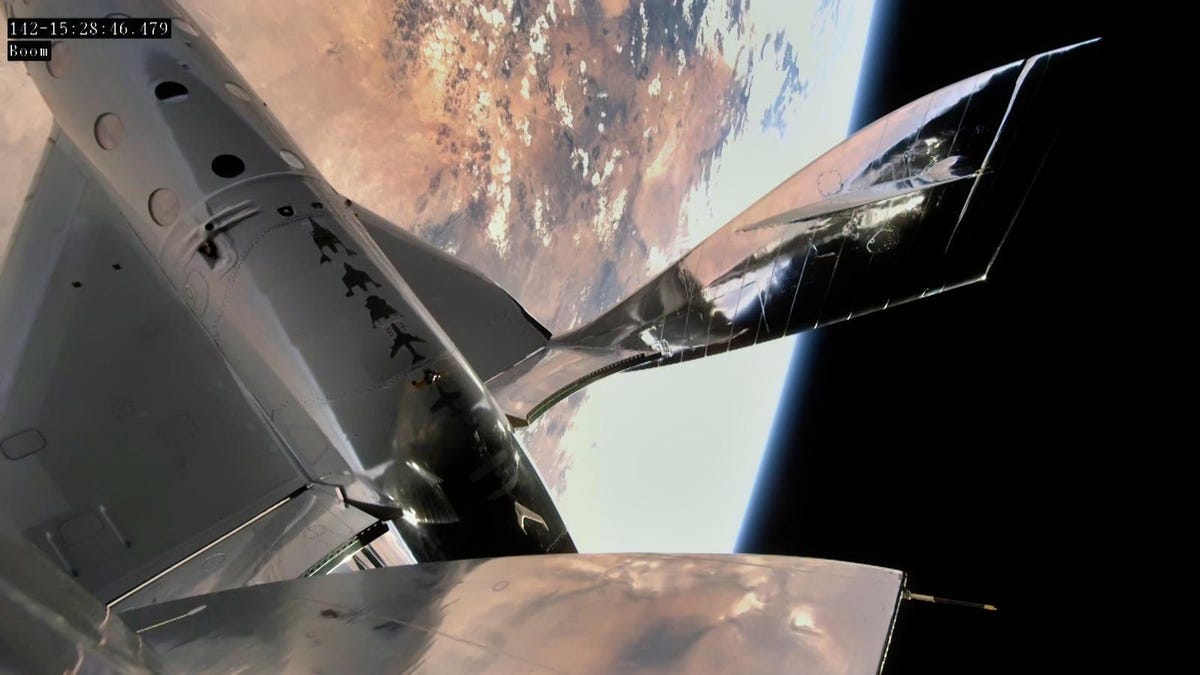Virgin Galactic nails 3rd spaceflight, after 2-year hiatus
The company wants to take tourists on sightseeing trips to space. A successful test from New Mexico brings it closer.

VSS Unity over New Mexico.
Richard Branson is clearly elated. On Saturday, Virgin Galactic, the company he founded in 2004 to bring tourism to space, got a step closer to that goal with its third successful test spaceflight.
It had taken some time. Virgin Galactic's last spaceflight happened in early 2019 (with its first taking place the year before). And this past December, it had to abort a test run because of technical issues. The coronavirus pandemic has slowed things up as well.
But on Saturday, the company's unusual two-hulled plane Eve carried the gleaming VSS Unity space plane aloft -- and then let it drop.
"VSS Unity achieved a speed of Mach 3 after being released from the mothership, VMS Eve, and reached space, at an altitude of 55.45 miles before gliding smoothly to a runway landing at Spaceport America," Virgin Galactic said in a release.
Branson tweeted out a video of himself watching and celebrating.
Delighted to be on the flightline to watch @VirginGalactic’s first human spaceflight from the majestic Spaceport America @Spaceport_NM #UNITY21 pic.twitter.com/FcpCxJcjqS
— Richard Branson (@richardbranson) May 22, 2021
Unity's flight, crewed by two pilots and carrying science and research payloads for NASA, was the first spaceflight from Virgin Galactic's Spaceport America complex in New Mexico, a kind of futuristic luxury airport for well-heeled space tourists.
Read more: Inside the Virgin Galactic spaceport sending the mega rich into space
Virgin Galactic has approximately 600 future astronauts in line for its jaunts to space (or at least to the edge of space -- defining where space actually starts isn't a straightforward affair). They've collectively given the company around $80 million in deposits. Depending on when the reservations were made, the cost of the trip begins at $200,000 a seat.
Virgin Galactic hasn't announced exactly when it'll send its first paying customer to space (Branson has said he'll be making the trip too). But it still has testing to do before commercial flights get started: Safety is a major concern, and setbacks the company has faced include a 2014 crash that killed a test pilot.
In its release, Virgin Galactic said Saturday's test run gave future ticket holders a preview of what they can expect.
"The crew experienced extraordinary views of the bright, blue-rimmed curvature of the earth against the blackness of space," the company said. "New Mexico's White Sands National Park sparkled brilliantly below. Their experience today gives Virgin Galactic's Future Astronaut customers a glimpse of what lies ahead."
You can get a glimpse yourself by checking out the video highlights below.
CNET's Eric Mack contributed to this report.

